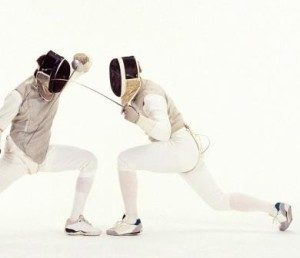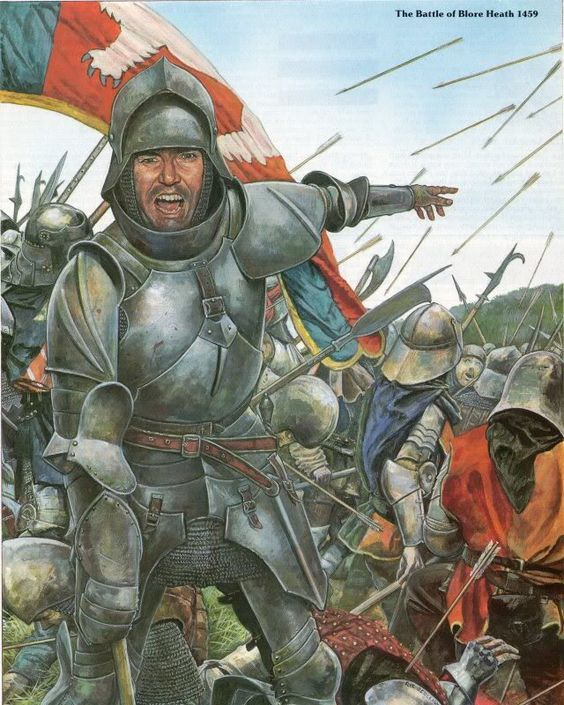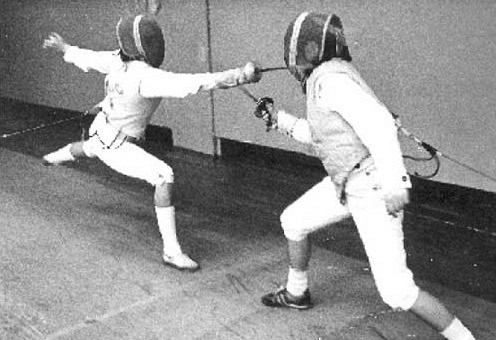FENCING: health benefits and contraindications.
 Fencing is not only an interesting, beautiful and fascinating sport, but also very healthy, with very few contraindications. Fencing can be done by people of any age, being in various physical forms. There are several types of fencing, but the article will focus on the most common and useful – sports fencing.
Fencing is not only an interesting, beautiful and fascinating sport, but also very healthy, with very few contraindications. Fencing can be done by people of any age, being in various physical forms. There are several types of fencing, but the article will focus on the most common and useful – sports fencing.
Fencing Description:
Sports fencing is a sport rooted in antiquity, where combat fencing (mastery of knives) was not only the most important discipline in the training of soldiers, but also taught to children. For the first time, sports fencing appeared in the Olympics program in 1896. Currently, this sport is divided into three types, depending on the weapon used: sword fencing, saber fencing and rapier fencing. Sports fencing is not only an independent sport, but also part of the modern pentathlon program. Fencing is considered a safe sport.
In sports fencing, a duel between athletes take place on a special track. Fencers use equipment – a suit, shoes, gloves, a mask, as well as a conductive jacket or vest. The athlete’s uniform, including weapons, weighs about 3 kilograms.
The goal of the duel between fencers is to inflict more injections (blows in fencing with sabers) to their opponent. Injections and strokes are recorded by a special electrical system, which, in the case of touching an opponent’s weapon, lights a lamp of the corresponding color.
The benefits of fencing:
Fencing is an excellent cardio load, which primarily has a beneficial effect on the cardiovascular system.
This sport trains the respiratory system.
Makes the body hardy and hardened.
Fencing is very beneficial for the nervous system. During the fight, the athlete splashes out emotions, thereby helping the body cope with stress, nervousness, depression and bad mood.
At the same time, stress resistance, the ability to control emotions, courage and even intelligence develop.
Practicing fencing trains almost all muscle groups, which allows you to form a beautiful, toned athletic figure.
Improved coordination of movements, agility, speed of reaction.
Fencing has a positive effect on the brain. This sport (as well as tennis and billiards) is even called “chess in motion.”
Fencing helps to lose extra pounds and solve the problem of overweight.
Contraindications to fencing:
Fencing can be contraindicated after injuries and in some diseases of the musculoskeletal system, especially for diseases of the legs and back, as well as during an exacerbation of diseases of the internal organs, with nervous disorders and some other ailments. In addition, with impaired vision, fencing can also hurt, because during training, constant attention switching is required and the eyes quickly get tired. Therefore, if there are any diseases before practicing this fascinating and useful sport, you need to consult a doctor.
Fencing for adults:
You can start fencing at any age. Confirmation of this can be the fact that the famous French long-liver Zhanna Kalman, who lived 122 years old, began to engage in this sport at a very advanced age. Moreover, experts say that people of any complexion, with weakened immunity and many other ailments can engage in fencing.
Fencing for children:
On the one hand, fencing is a kind of martial arts that most children like very much, and on the other hand, this sport is not traumatic, which cannot but please caring parents. Fencing has a positive effect on both the physical and psychological development of the child. It helps to increase self-esteem, develop qualities such as determination, the ability to soberly assess the situation and think through actions several steps ahead. Experts recommend starting fencing from an early school age.
Engage in fencing with pleasure, take care of yourself and be healthy!
We also recommend reading interesting articles:
– Bowling: health benefits, contraindications, rules of the game.
– Curling: health benefits, rules of the game.
– Biathlon: health benefits and contraindications.
– Be an example to your children.




